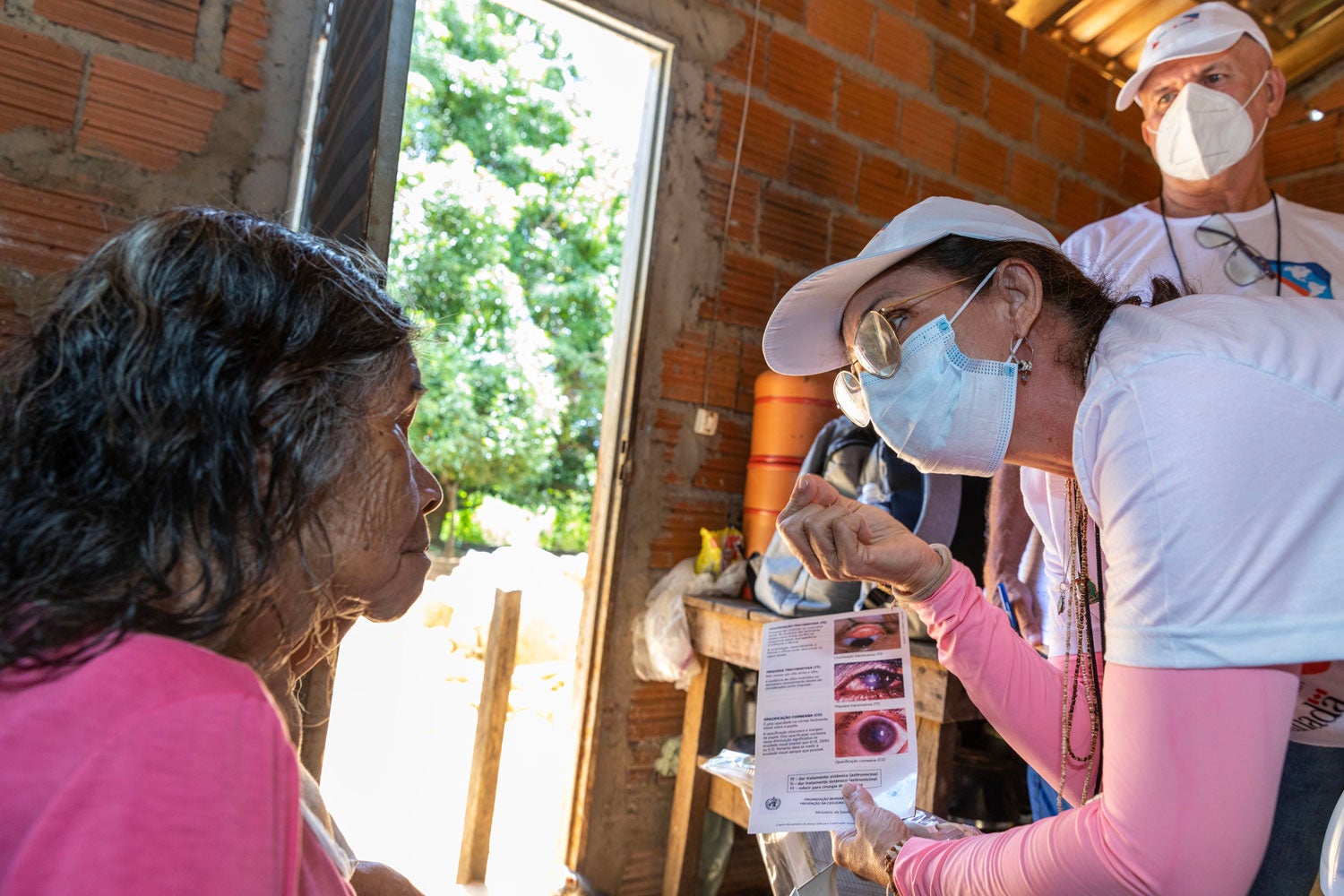
Brasilia, May 6, 2024: To advance the plan to eliminate trachoma as a public health problem in the Americas, the Pan American Health Organization (PAHO) and the Government of Canada are developing a project in 10 countries in the Region. In Brazil, the project is being implemented in cooperation with the Ministry of Health, in the Special Indigenous Health District of Tocantins (DSEI). In the first year of the initiative, which runs until 2028, surveys (examinations and data collection) were conducted with more than 3,000 people.
Sheila Rodovalho, PAHO/WHO Officer for Malaria and Neglected Infectious Diseases, explains that "we’re conducting surveys to provide a better understanding of the local situation, assessing household residents, especially children, to understand the transmission of the disease."
Maria de Fátima Costa Lopes, a technical consultant at the Department of Communicable Diseases of the Secretariat of Health Surveillance and Environment (SVSA), Brazilian Ministry of Health, highlights that the area was chosen because "it presented a history of trachoma cases, in addition to not having participated in the national trachoma prevalence survey for validation of trachoma elimination as a public health problem, conducted in 2018 in non-indigenous areas, and in 2021 in indigenous areas."
During the surveys, 750 households were visited, and 3,123 people were examined, including 894 children aged 1-9 years. According to Maria de Fátima Costa Lopes, in addition to the diagnosis of trachoma, the surveys promoted "institutional exchange with intercultural and gender approaches."
The information collected was sent daily by the teams via smartphone to Tropical Data, a global data hub on trachoma. The results will be presented later to build a proposal for an intersectoral intervention with an emphasis on intercultural and gender issues, involving the participation of the local population.
Trachoma, an infectious eye disease and the leading cause of blindness among women in poor and remote areas of Latin America, is endemic in many rural, poor, and remote areas of the world, including Brazil, Colombia, Guatemala, and Peru, where it affects around 5.6 million people. In Latin America, indigenous populations in the Amazon basin are disproportionately affected by the disease.
It is estimated that women are twice as likely as men to be affected by the disease and up to four times more likely than men to go blind due to trachoma. This is due to a combination of factors, including traditional gender-based caregiving roles in endemic communities, low education levels, and limited access to basic health services.
Caused by the bacterium Chlamydia trachomatis, trachoma is transmitted both by flies (mechanical vectors) and through direct contact with the eye secretions of infected people. Factors that favor transmission include overcrowding and poor sanitary and hygiene conditions.
Pilot Survey
Before conducting the surveys, a pilot was carried out to align the teams and adjust the methodology. The teams were composed of examiners, recorders trained by the Tropical Data/ICTC trachoma prevalence survey training system, field supervisors, and local health teams from the Ministry of Health, the Tocantins Health Secretariat, the Evandro Chagas Institute, the Oswaldo Cruz Foundation (Fiocruz), and the Tocantins DSEI.
Four teams were organized, two of which had an additional professional for blood and swab collection for laboratory evaluation samples, with the aim of identifying the situation and the presence of chlamydia in the community.
The first stage of the household approach began with an initial contact, where the professionals introduced themselves and asked the residents for permission to enter and detail the work being carried out.
The surveys also assessed environmental issues to which people are exposed, such as sanitary and hygiene conditions, among others.
The analyses will contribute to accelerating the implementation of PAHO/WHO's integrated package of interventions against trachoma, known as SAFE, which includes interventions in S-surgery for TT management, A-antibiotics to treat infection, F-facial hygiene, and E-improved environmental conditions (improved access to water and basic sanitation) to prevent infection and interrupt disease transmission.









